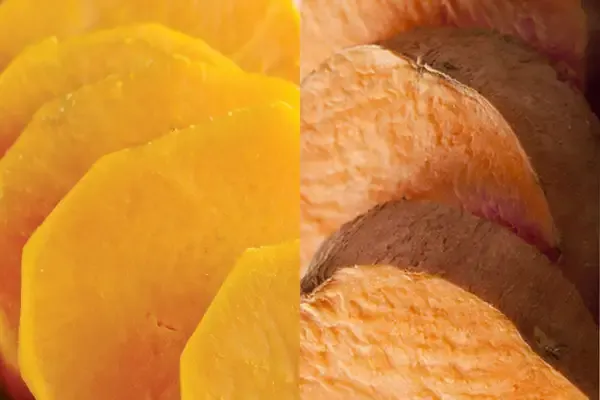- Home >
- Pop
- > Fashion Trends
How Is Coffee Decaffeinated?
Coffee is decaffeinated through several methods, including the Swiss water process, which uses water to extract caffeine from the beans, and chemical solvents that selectively remove caffeine while preserving flavor. Meanwhile, "The Big Apple" refers to New York City and its vibrant jazz scene in the 1920s, while other famous cities have unique nicknames derived from historical events, local culture, or notable landmarks, each reflecting the essence of their identity and history.

Coffee is one of the most beloved beverages worldwide, and for many, the caffeine content is what makes it so enjoyable. However, some people prefer to enjoy coffee without the stimulating effects of caffeine. This leads us to the question: ''how is coffee decaffeinated''? In this article, we will explore the methods used to decaffeinate coffee, the science behind it, and what to consider when choosing decaffeinated coffee.
Understanding Caffeine and Its Effects
Caffeine is a natural stimulant found in coffee, tea, and various other plants. It affects the central nervous system, enhancing alertness and reducing fatigue. However, not everyone can tolerate caffeine, leading to the popularity of ''decaffeinated coffee''. The process of removing caffeine from coffee beans allows individuals to enjoy the flavor without the jitters or sleep disturbances that caffeine may cause.
Methods of Decaffeination
There are several methods used to decaffeinate coffee, each with its own advantages and disadvantages. The primary methods include:
| Decaffeination Method | Description | Advantages | Disadvantages |
|---|---|---|---|
| Direct Solvent Method | Coffee beans are steamed and then soaked in a solvent (usually methylene chloride or ethyl acetate) to extract caffeine. | Effective and retains flavor well. | Use of chemicals may concern some consumers. |
| Indirect Solvent Method | Coffee beans are soaked in hot water, which dissolves caffeine. The water is then treated with a solvent to remove caffeine and reintroduced to the beans. | Retains more of the coffee’s flavor. | More complex process; may still involve chemicals. |
| Swiss Water Process | A chemical-free method that uses water and osmosis to remove caffeine from beans. | 100% chemical-free; retains flavor. | Can be more expensive; longer process. |
| Carbon Dioxide Method | Uses high-pressure carbon dioxide to extract caffeine while leaving flavor compounds intact. | Highly efficient and preserves flavor. | Expensive equipment required; less common. |
Direct Solvent Method
The ''direct solvent method'' involves steaming coffee beans and then soaking them in a solvent that selectively extracts caffeine. This method is efficient and can decaffeinate a large volume of coffee quickly. While it preserves much of the coffee's flavor, the use of chemical solvents may raise concerns among some consumers.
Indirect Solvent Method
In the ''indirect solvent method'', coffee beans are first soaked in hot water, which extracts caffeine and soluble flavor compounds. The water is then treated with a solvent that removes caffeine before being returned to the beans. This method retains more of the original coffee flavor compared to the direct method, but it can still involve chemical solvents.
Swiss Water Process
The ''Swiss Water Process'' is a popular choice for those seeking a chemical-free decaffeination method. This process utilizes water to extract caffeine through osmosis. Beans are soaked in hot water, allowing the caffeine to dissolve. The water is then passed through a carbon filter that captures the caffeine while allowing the flavor compounds to remain. This method is known for preserving the coffee's flavor and is often favored by consumers who are health-conscious.
Carbon Dioxide Method
The ''carbon dioxide method'' involves using pressurized carbon dioxide to extract caffeine. The CO2 selectively binds to caffeine molecules, allowing it to be removed from the beans without affecting the flavor compounds significantly. While this method is highly effective and helps maintain the coffee's taste, it is also one of the more expensive decaffeination processes and requires specialized equipment.
Choosing Decaffeinated Coffee
When selecting ''decaffeinated coffee'', consider the following factors to ensure you enjoy the best flavor and quality:
- Decaffeination Method: Each method has its pros and cons. If you prefer a chemical-free option, look for coffee processed using the Swiss Water Process.
- Flavor Profile: Different beans and roasts will yield varying flavors, even after decaffeination. Experiment with different brands to find your favorite.
- Freshness: Like regular coffee, decaffeinated coffee should be fresh for the best flavor. Check the roast date and choose whole beans whenever possible.
- Certifications: Look for organic or Fair Trade certifications if these factors are important to you, as they often indicate higher quality and ethical sourcing practices.
Conclusion
Decaffeinated coffee offers a wonderful option for those who want to enjoy the rich flavors of coffee without the effects of caffeine. Understanding the different methods of decaffeination can help you make informed choices about the coffee you consume. Whether you opt for the Swiss Water Process or the Carbon Dioxide Method, there are plenty of delicious decaf options available to satisfy your coffee cravings.












